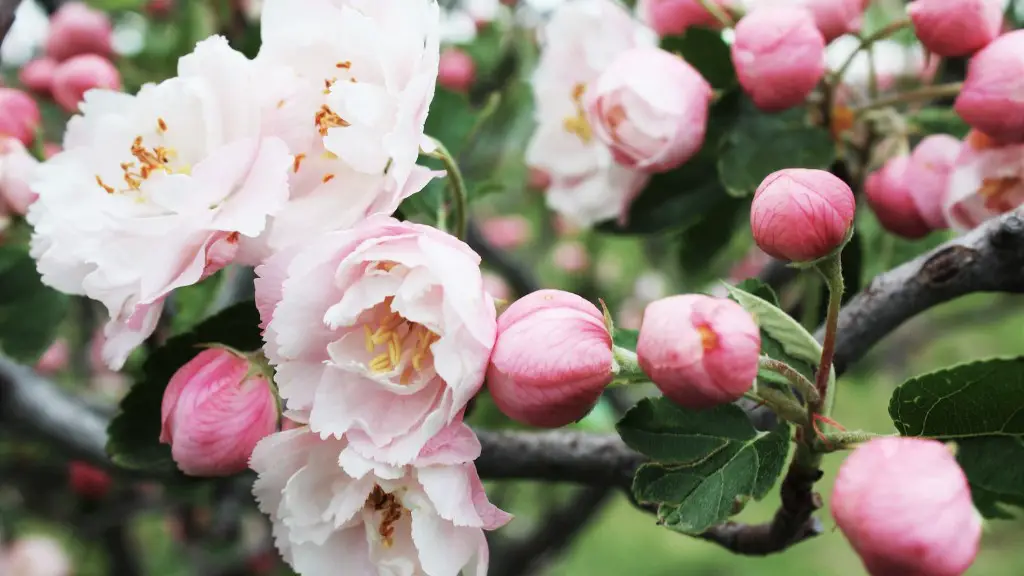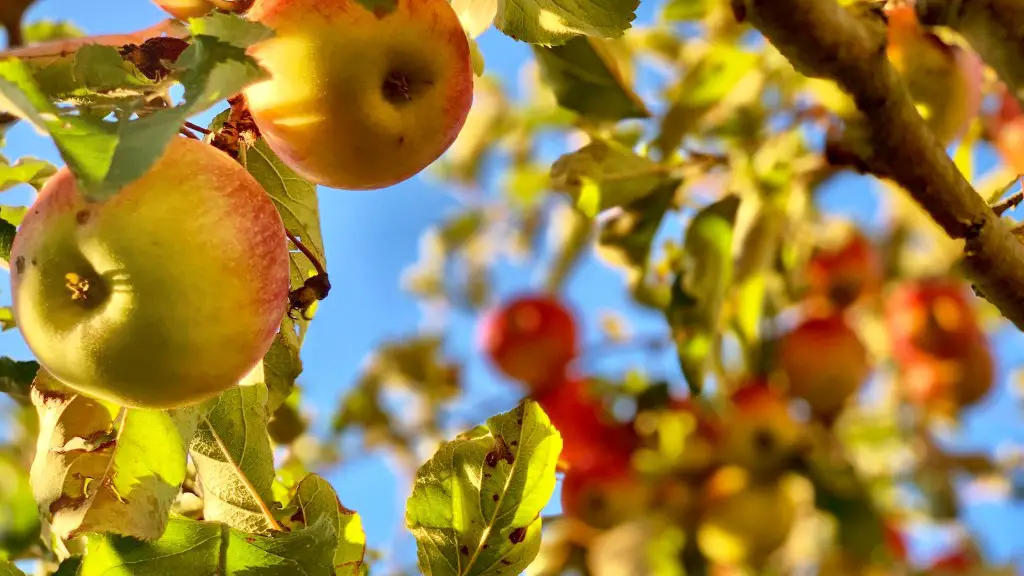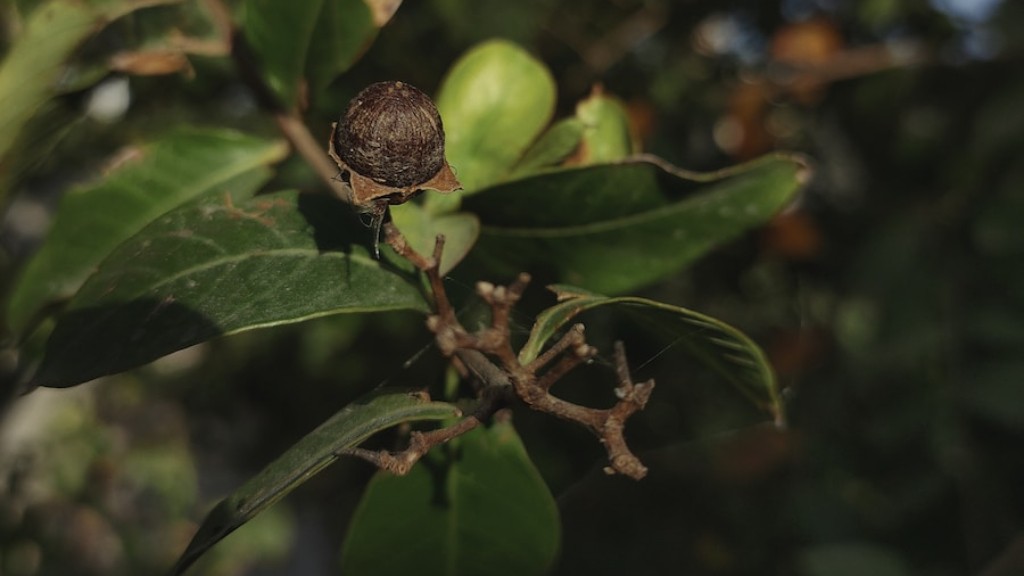It is often heartbreaking to witness dozens of apple trees decline and die and a large part of this can be attributed to improper care and attention being given. In order to prevent this from happening, it is essential to know how to properly save an apple tree from dying. Here are some essential steps and techniques to keep in mind:
Firstly, identify the real cause of decline and take the necessary steps to remedy it. If it is due to a pest or disease, be sure to trace the source and properly treat the tree. If this doesn’t work, don’t hesitate to contact a certified arborist to get a more thorough diagnosis and treatment plan.
Secondly, make sure the tree is getting the right amount of water and nutrients. Newly planted trees should be watered regularly and heavily during the first two years, while established trees should be watered deeply every 10-14 days. In addition, fertilizing twice a year (in the spring and outer summer) can also help minimize damage.
Thirdly, maintain a proper pruning and shaping program to ensure that the tree has enough space to develop and flourish. This will involve removing any overcrowded or weak branches, as well as trimming any branches that may be blocking sunlight and airflow. Finally, mulch around the tree in order to maintain a healthy moisture content in the soil.
Next, make sure to keep the tree free from weeds and grass around the trunk and root zone. Also keep an eye out for any signs of wildlife activity, such as holes, nests, webs and suspicious tunneling, which may be indicators of a more serious issue.
Finally, it is important to keep an eye on the weather. Extremely hot and dry weather during the summer months can wreak havoc on your tree, and so it is best to take early precautionary steps such as providing shade or providing water. By keeping a regular watering schedule, you can help your tree stay healthy and lush during the hot summer months.
Fertilizing and Nutrient Supplements
Fertilizing is an essential part of any apple tree health management program and should be done in the spring and summer months. When fertilizing, choose a fertilizer specifically for fruit trees that contains nitrogen, phosphorus and potassium. Depending on the age of your tree, the amount of fertilization needed may vary. Newer trees may require as much as three pounds of fertilizer per inch of trunk diameter every year, while older trees may require as little as one pound per inch. Before applying any fertilizer, make sure to read the labeling instructions carefully to ensure that your tree is getting the correct nutrients.
In addition to fertilizing, it may be beneficial to consider supplementing your tree with the necessary nutrients. Calcium is especially important for apple trees to produce strong, resilient fruit. Applying lime and gypsum to your soil can help provide the necessary calcium and magnesium to help your tree thrive. Trace elements such as zinc and boron can also be beneficial when added in small amounts.
Finally, keep an eye out for possible pest infestations and take the necessary steps to protect your tree. Many insects can be detrimental to the health of your tree, so regular inspection and treatment is essential to keep your tree from dying of a pest-borne disease.
Soil Preparation and Weed Control
When it comes to saving an apple tree from dying, one of the most important considerations is making sure the soil is in healthy condition. Keeping up with routine soil tests can help provide valuable feedback on the amount of essential nutrients that may be missing and should be addressed. Be sure to keep up with a consistent fertilization regime, to ensure the pH balance is ideal for optimal tree growth.
In addition, eradicating any weeds or grass that is competing with the tree’s roots is paramount to its survival. These weeds can not only be harmful to the health of the tree, but can also lead to soil erosion and other unwanted consequences. The best way to control weeds near the tree is to regularly pull them by hand or to apply an herbicide.
Professional Assistance and Regular Inspections
If you are still unable to determine the cause of the tree’s decline, it is best to contact a certified arborist to get a professional opinion and advice. An experienced arborist can quickly diagnose the tree’s condition and recommend the best course of action for treating the tree. In some cases, the tree may have to be removed if it has suffered from a severe case of disease or pest infestation.
Finally, regular inspections can help you catch problems early and save the tree from dying. Inspections should be done at least once a year to check for any signs of disease or pests, and to make sure the tree is on track to a healthy life.
Disease Treatment and Prevention
When it comes to treating and preventing apple tree diseases, the first step is to identify the disease that is affecting the tree. Once you have identified the disease, there are several courses of action that you can take to help prevent it from killing your tree. Pruning affected branches, applying chemical fungicides, or using a combination of both are common treatments for apple tree diseases.
It is also important to remember that prevention is the best form of defense. Routine pruning and inspection can help spot the signs of disease quickly and address the issue before it progresses too far and leads to the tree’s death. In addition, avoid over-fertilizing and over-watering your tree and if possible avoid exposing your tree to too much stress or shock.
Environmental Stress Prevention
Environmental stress can be one of the leading causes of apple tree death due to the damaging effects it can have on the tree’s growth and operation. Factors such as extreme temperatures, soil erosion, and tough winds can all take a toll on the tree’s health and should be prevented as best as possible. One way to do this is by regularly checking on the tree’s water and nutrient levels, especially during the summer months when the tree is particularly susceptible.
Provide adequate shade and ensure that there is ample room for the tree to develop and flourish. Other strategies such as mulching, aerating and adding soil amendments are also beneficial in helping regulate the temperature of the soil and provide rich nutrients.
Final Considerations
Ultimately, saving an apple tree from dying can be a difficult task and requires a lot of patience and dedication. It is important to remember that different trees will require different levels of attention and care. Make sure to read up on your specific tree species and consider consulting a certified arborist to get more detailed advice.
Take your time and be diligent. Taking proper preventative steps such as pruning, fertilizing, soil preparation and weed control can help keep your apple tree healthy and strong for years to come.




